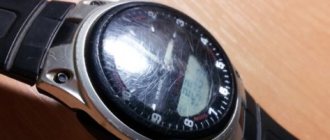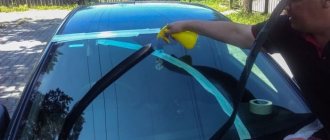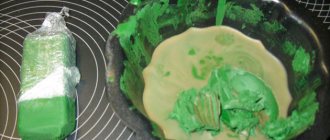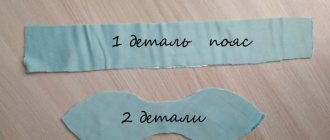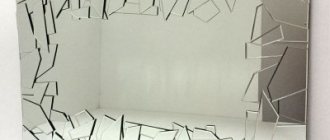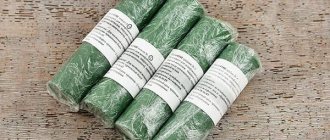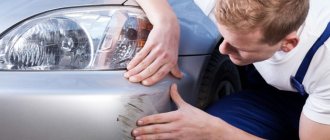Yesterday I accidentally came across an article about glass polishing, maybe it will be useful to someone)
During the operation of the vehicle, scratches constantly appear on the windshield due to sand, dust, and small pebbles. They get under the wipers and constantly scratch the glass, which is noticeable even to the naked eye. Pebbles from the road that fly out and land directly on the windshield cause the most serious damage to the car. This process cannot be prevented, but shallow scratches can be removed. After all, auto glass is necessary for the driver to clearly see everything that is happening on the road. Therefore, improper care of glass not only leads to damage, but also poses a safety risk for both the driver and the passenger. Many people use toothpaste to grout small scratches. This is a very old way. You just need to apply toothpaste to the scratch and let it dry. Then wipe the surface with a soft cloth. But it’s better, of course, to use professional tools.
ORDER OF WORK
Surface preparation. Before you can get rid of scratches on your car, you need to prepare the surface to be treated. You need to rinse it thoroughly and dry it. Then identify the areas that need polishing. They must be identified visually. For a more thorough examination, you can run your finger across the glass. Where the skin clings to the scratch, it is better to mark it with a marker. You need to take a clean cloth and glass cleaner. Soak a cloth in warm water and rinse the glass thoroughly. Then wipe everything dry. Next, apply glass cleaner to the sponge and thoroughly clean the glass with it. As a final touch, wipe everything down with a dry, lint-free cloth. Next, you need to protect the interior and body of the car from contact with cleaning agents. In order not to stain the car body, it is necessary to completely cover it with film. A cutout should be made on the windshield and secured with tape along the edges of the resulting window. Necessary equipment. Also, before removing scratches from the glass, you need to prepare the tool. This could be a professional polishing machine, or if you don’t have one, then a simple drill with a circular attachment made of fabric (felt) attached to a chuck will do. A grinding machine will not work in this case. It is best to use a polishing wheel rotation of no more than 1700 rpm. Professional tools are best used by those people who are confident in handling them. Otherwise, you can easily deform the glass, even to the point of a lens effect. You should purchase pastes and masking tape in advance. You need to work in gloves, a mask and a respirator, and special glasses.
Polishing. Produced with a special paste. It is applied to scratches and polished the surface using a soft felt wheel. If you polish the scratches, the glass will become cloudy and at the same time change its color. Not very deep scratches can be repaired with wax or paraffin. You just need to apply them to the scratch and rub thoroughly with a dry cloth. The polishing process begins by applying paste or polish to a piece of glass or a nozzle. There is no need to cover the entire surface with paste at once, as it dries and loses its elasticity. After the paste is applied, the cleaning process itself begins, which should be smooth, without pressure. You also need to monitor the temperature of the glass, otherwise heating it can lead to an increase in cracks. To reduce the temperature, it is best to use a household spray bottle. It can be used to feed into the polishing zone. The polishing area must be limited with tape and the tool must constantly move without stopping. Washing. It is necessary to wash off with cold water all the remaining abrasive substances remaining from the polishing paste. Remove the tape and film from the car. You can wipe the entire car with a damp and dry cloth and evaluate the overall condition of the repaired areas. If there are any shortcomings, defects, or clouding, then it will be necessary to repeat the glass cleaning procedure. If everything was done wisely and correctly, then the effect should be simply excellent. It should be noted that regular polishing cannot remove large cracks. It seems that everything is easy and simple. However, it is not. Grouting scratches is a long, labor-intensive process and you should be patient. There are special ointments and pastes to remove minor scratches. For example, GOI paste is made on the basis of chromium oxide and is used for polishing and cleaning steel alloys and glass. However, it will leave a cloudy trail. You should try not to overdo it while sanding with this paste. If you press it too hard, you can cause even more damage to the car. If a fine spider web of scratches appears on your car glass, you can polish it with diamond paste. Scratches from windshield wipers can be rubbed off with CD polishing paste. But it is better to ask the master which paste to choose, since its different variations have different grain sizes.
Price and benefit
In order to understand what price category this polishing product is in, you can compare it with other representatives of this category (the price is given per 100 grams). Thus, diamond paste for final polishing costs an average of 250 rubles, the same paste for roughing – 3000 rubles, Ftoropol polishing powder – 600 rubles, CeriGlass paste – about 500 rubles per 150 ml. The cost of 100 grams of GOI paste ranges from 130 to 160 rubles (all prices are as of 2016)
Polishing the windshield with goya paste
The method of polishing with GOI paste is not much different from polishing with other pastes. A small amount of paste is applied to a soft fabric (it can be any natural fabric, from cotton to wool, felt is also welcome) - more precisely, with a small block (this is the form in which GOI paste is produced) the fabric is rubbed. After this, rub the windshield in a circular motion, gradually moving so as not to rub one place for a long time. The effectiveness of polishing will be greatly increased if the cloth used for polishing is moistened with gasoline (or a mixture of gasoline and oil).
Before polishing with GOI paste, the surface of the windshield must be cleaned of dirt and treated with a glass cleaner, or at least degreased with alcohol-containing liquids.
After finishing the polishing work, the glass must be cleaned again - washed. The nature of washing depends on whether polishing was preceded by grinding. If so, then the windshield is washed using non-contact foam. If the glass has only been polished, you can wash it with a stream of water under pressure. The effect of polishing with GOI paste will last for a longer time if any protective finishing polish is applied to the windshield. This protective layer will give the windshield a dirt-repellent effect, and will also protect against microtrauma caused by the smallest abrasives (dust, sand, etc.)
Note: before starting work, select the desired paste, since GOI is available in four numbers, from No. 1 to No. 4. The first numbers are for imparting a mirror-like intense shine to the surface without significant damage, the last number is for intensive treatment of a worn or scratched windshield.
Glass as a decorative element for pottery appeared 6 thousand years ago in Egypt and Ancient Babylon. Over so much time, glass materials of various compositions began to be used not only for decoration, household needs and as a finishing material, but also in medicine and industry. The main quality of modern glass of any type is transparency. How to polish glass and return it to crystalline and clear when damaged?
Damage removal options
There are two options to get rid of scratches - remove them yourself, or contact a specialist.
You will be able to deal with the problem yourself if the defects are minor. If the glass is severely damaged, then it will not be possible to do without the help of a specialist .
To understand how significant the defect is, you need to run your fingernail over it. If it falls into the recess and clings to the walls, the scratch is deep.
You will be able to remove the defect yourself if it appeared due to sand getting under the wipers or due to improper washing of the car. When scratches are the result of stones flying into the windshield or the result of too aggressive cleaning of ice, you will need the help of a specialist.
You need to be prepared for the fact that deep defects cannot be completely removed. Such scratches can be polished by approximately 60%. This improves the appearance of the car, but it is no longer possible to make the glass look like new.
How to polish glass
Grinding and polishing are different processes, as confirmed by electron microscopes. Polishing is considered a physicochemical phenomenon, as a result of which, it is assumed that the top layer of glass becomes plastic, so irregularities and tubercles turn into a continuous smooth surface.
When polishing glass at home, solutions of micropowders, which are passed through a fuel filter before use, and pastes are used. Glass polishing compositions can be industrially produced or homemade.
GOI paste is a mixture of fine chromium oxide Cr2O3, active components and fatty ligament.
The composition comes in four types according to the size of the “grain”: coarse – “erases” scratches, medium (of two types) smoothes, and fine – “edits” to a mirror shine. With GOI paste you can remove scratches on glass ceramics and polish any glass, even optical glass. How to use GOI paste:
It does not dissolve in water, but easily in purified gasoline. Therefore, felt, flannel or felt is lightly moistened with gasoline (or kerosene), and then GOI paste is applied. Mineral oil is dripped onto the glass surface. And they begin processing. Rotations should be soft, without sudden increases.
Experts in the manufacture of lenses for telescopes recommend washing the organic binder from abrasive particles with solvents to make polishing faster. But when rubbing organic glass, you should not do this.
Chromium oxide has toxic properties. Its hardness is similar to corundum. Also contained in the artistic oil paint “Chromium Dioxide Green”.
Crocus. It is made from iron (not copper!) yellow-brown sulfate, diluted with water and adding alkali. After filtration, the resulting precipitate is dried and used to polish light scratches. Crocus is used in ship repair work as a coloring pigment. Cerium oxide - removes defects and abrasions on ceramics, glass-ceramic, quartz, and window glass. Polishes mirrors, watches, lenses, telephones, car windows, and portholes. Included in ready-made polishing compositions: Regipol, Cerox, “Polyrit”, “Cerite”, “Ftoropol”. Diamond pastes and powders, which are diluted with Vaseline and silicones, are the best means that can polish even sapphire crystals. There are 12 types of ready-made pastes based on grain size. Polishing pastes from car dealerships intended for polishing car glass. They stain less and are easy to use. Homemade glass polish recipes: chalk, non-abrasive toothpaste, a paste of baking soda and water or vinegar and mustard. According to reviews, they cannot level out scratches, but they can eliminate abrasions.
In order to remove scratches from glass surfaces, no matter what you start polishing with, first use pastes with a coarse “grain”, then fine ones. The following are used as polishing materials:
Soft cloth, felt, felt. Leather (raw), suede. Polyurethane. Category polishing resin. Cork tapes. And even a tree.
It is recommended to polish glass with a grinder with manually adjustable speed, a drill, a grinding machine, attaching felt material to the disc and applying polishing paste. Or a special electric polishing pad.
Wooden blocks, rubber, fabric or cotton wool, covered first with leather and then with felt, are also suitable for processing, but you will have to spend a lot of effort and time on manual polishing.
How to polish glass and mirror
A number of types of glass are used in construction, differing in thickness and optical energy characteristics. High-quality window glass is colorless, with a high light transmittance. There are two types:
M4 - polished float glass, which is produced by casting a molten glass strip onto molten tin in a certain atmospheric environment and temperature. M5 and M6 are made using the “old-fashioned” vertical method of drawing between rollers.
Heat-saving glasses are opaque; the reflective coating gives a slight “haze”. Laminated - have a tint. It is not advisable to polish them. It is also better not to subject tempered glass to mechanical processing. Ordinary glasses are transparent to radiation in the optical range of electromagnetic waves, for which they are valued. Minor damage to them does not affect the illumination, but spoils the aesthetics of the room and the mood of the inhabitants.
How to polish your car windows yourself
Minor scratches and dullness from abrasions on the glass surfaces of the car are polished with special pastes for automobile glass. Most of them are made according to the principle of GOI paste.
Owners of a “polisher” for a car will not experience any difficulties. The polishing machine is replaced with a drill or grinder. But there is a nuance. Side windows can also be polished at high speeds. But for multi-layer windshields and rear windows, which have an adhesive and reinforcing layer of polyvinyl butyral (PVB) inside, heating from intense friction is contraindicated, as it causes darkening.
How to polish car glass yourself:
Circle the defects from the inside so as not to lose damaged areas. Cover parts of the body with protective material and secure with tape so as not to damage the paintwork. The paste can be applied to glass using the same material that will be used for polishing. Be sure to spray the surface with a spray bottle at the beginning of work and during the process to prevent the paste from drying out when heated by friction. Polish areas at 1000 – 2500 rpm. Before moving on to the next area, rinse the treated area and examine it from different angles, including from inside the salon. If the result is not satisfactory, repeat the process. You may need to change the polishing compound.
When polishing car windows, wear safety glasses and clothing.
GOI paste was named after the initial letters of the place of invention - the State Optical Institute.
Headlight treatment
Polishing headlights is not fundamentally different from polishing other elements. Before processing, the headlights are washed. You will need WD40 lubricant. It, together with the paste, is applied to a polishing wheel made of felt or felt. The grinder (drill) should have a speed within 1000. Do not put pressure or force on the surface being treated. After two passes, the headlight takes on an almost perfect appearance. Then they start processing with polish. You can carry out the entire procedure manually, but then it will take not ten minutes, but at least an hour.
How to polish phone glass?
With scratched phone glass, do the same as with other glass surfaces: rub with GOI paste using soft suede or cotton napkins. In order not to contaminate the entire body, the screen is removed or the entire untreated area is covered with tape.
For scratched touch phones and polishing touch screens, special products are recommended that remove scratches from CDs. But they hide the damage rather than get rid of it. After a while, the procedure will have to be repeated. Please note that screen heating can damage the sensors.
Necessary equipment
Ideally, you will need a special polishing machine. However, if you don’t have one, then a simple electric drill can do the job perfectly. Just purchase a special attachment for a felt (or better yet, felt) polishing wheel. Stock up on clean napkins and soft cloths. You will also definitely need a sprinkler. In addition, purchase in advance a fine paste designed for polishing car glass.
